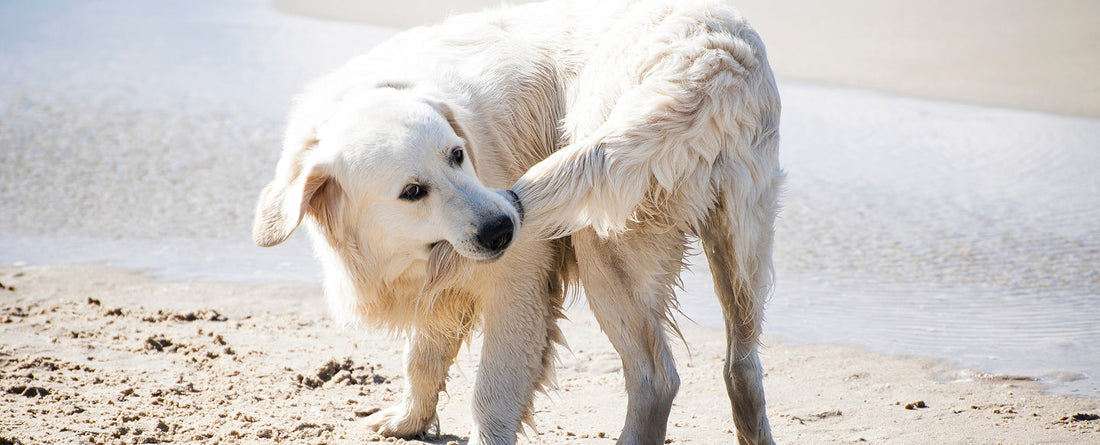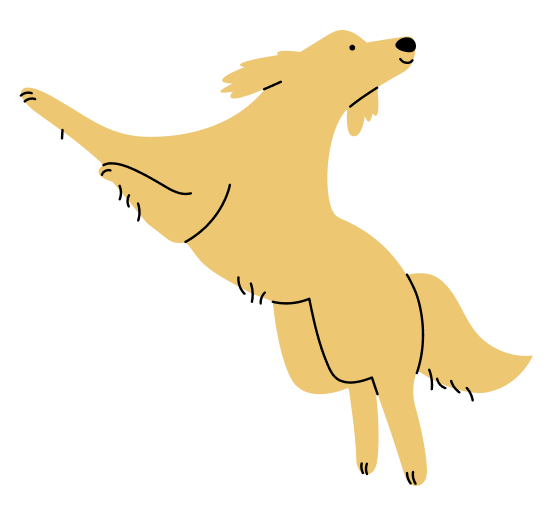Tail chasing is a common habit among dogs, and most of the time, it’s harmless. However, in some cases, it can signal an underlying issue that may pose a risk to their health. If you notice your dog chasing their tail more frequently or in an unusual way, it’s worth understanding what this behavior could mean.
What do dogs chase their tails?
There are several reasons why dogs might chase their tails:
-
Boredom
One of the most common reasons dogs chase their tails is simple boredom. When they have no one or nothing to play with, they may turn to their own tails as a source of entertainment. This behavior is often an attempt to pass the time or get your attention. Since dogs are naturally active, tail-chasing can be a way of expressing their desire for interaction and play.
-
Attention-Seeking
Tail-chasing can also be a call for attention. Dogs may engage in this behavior because they want you to notice them and join in on the fun. While this is usually harmless, it’s important to ensure your dog has enough mental and physical stimulation throughout the day.
- Irritation from Fleas or Mites
In some cases, tail-chasing is a response to physical discomfort. Fleas, mites, or other skin irritations can cause itching, especially around the tail area. When dogs feel this discomfort, they may chase or bite their tails in an attempt to relieve the itch.
-
Pain or Discomfort
Muscle aches, joint pain, or other physical discomforts can confuse dogs, leading them to chase their tails in an effort to relieve the pain. Stomach aches caused by indigestion, for example, can make a dog exhibit this behavior as they try to make sense of the discomfort.
-
Anxiety
Anxiety is another possible cause of tail-chasing. Dogs may become anxious in new environments, around unfamiliar people or animals, or when they’re faced with new activities. In some cases, this anxiety manifests as repetitive behaviors like tail-chasing. If your dog is struggling with occasional stress, we suggest trying a calming supplement like Advanced CBD Isolate, which helps promote a sense of relaxation and mental alertness without causing drowsiness.
Is it dangerous for dogs to chase their tails?
In some situations, tail-chasing can indicate a more serious issue:
-
Neurological Issues: If your dog seems to get bored easily and chases their tail excessively, it could be a sign of a neurological issue. Constant tail-chasing beyond what is normal play behavior may lead to difficulty with focus and discipline, making training more challenging.
- Behavioral Problems: In some cases, dogs that frequently chase and bite their tails may develop unruly behaviors over time. If left unchecked, this behavior could escalate, and your dog might start chasing and biting at other things—or even people.
- Stress and Anxiety: Anxiety-related tail-chasing can lead to larger health problems. Chronic stress in dogs may result in vomiting, digestive issues, and other stress-related symptoms.
- Infections: Flea bites and constant scratching can lead to open wounds, which may become infected. If your dog bites or scratches their skin too much, bacteria and fungi can thrive, leading to further complication
Can you prevent dogs from chasing their tails?
If your dog is exhibiting tail-chasing behavior that seems unusual, there are a few steps you can take to help prevent it:
-
Establish a Regular Exercise Routine
To help manage boredom and anxiety, make sure your dog gets plenty of exercise and mental stimulation. Regular walks, playtime, and engaging activities can help relieve boredom and reduce tail-chasing.
-
Support Nervous System Health
Providing your dog with a balanced diet that includes essential vitamins can support their nervous system and reduce the likelihood of unruly behavior. Supplements with Vitamins like B12 are known to promote healthy nerve and brain development.
-
Address Discomfort
Joint discomfort might be contributing to tail-chasing. Consider adding supplements like Advanced Joint Liquid or Advanced Hip & Joint Support, to your dog’s routine. These can help enhance joint health and reduce occasional discomfort from normal exercise and aging, making it less likely that your dog will resort to tail-chasing for relief.
Conclusion
Dogs have many unique habits, and since they can’t communicate verbally, it’s important to pay attention to their behaviors—like tail-chasing—to understand what they might be trying to tell you. While tail-chasing is often harmless, keeping an eye on the frequency and intensity of this behavior can help you catch any potential health issues early. As a responsible pet owner, being mindful of your dog’s habits will go a long way in ensuring their health and happiness.










